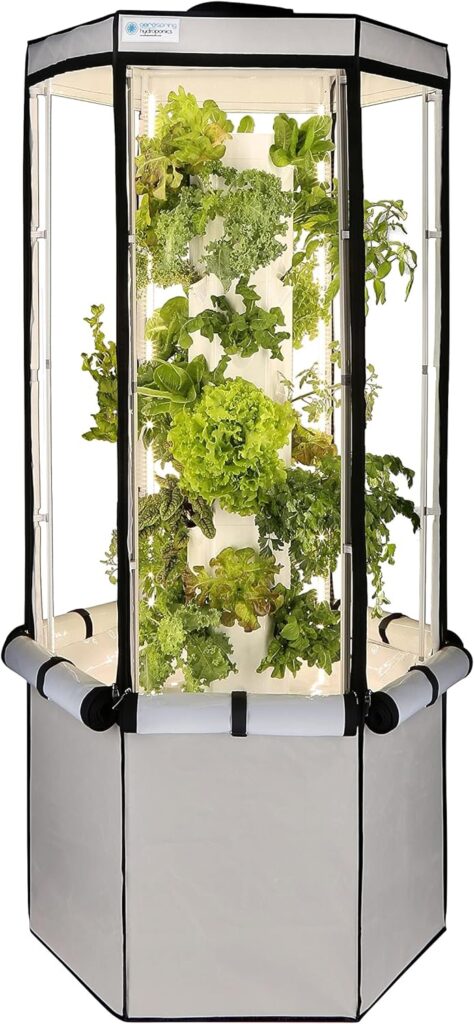Living in Minnesota, where the winters can be brutally cold, I’ve discovered the joy and practicality of indoor gardening when the outdoor conditions are less than ideal. In the heart of winter, when the ground is frozen and snow blankets the landscape, we can use indoor gardening to create an edible landscape stuffed in the nooks and crannies of our homes.
In this article, we’ll explore the world of indoor gardening and provide practical tips for incorporating it into your busy lifestyle.
How do you do indoor gardening in an apartment?
I’ll admit, I think I like the idea of houseplants more than maintaining them! There is no shortage of searches for houseplants that are easy to care for: plants that allow for low light, slow feeding, the right size for an indoor space, and either don’t require a lot of water or are easy to automate watering.
Houseplants should also be uniquely beautiful and decorative, and be safe for pets and children. While there are plenty of options that fit those criteria, I opt to spend my mental energy on plants that will give my body energy; if I can find that they also serve as low-maintenance edible house plants, then all the better.
I believe there are five pillars to a successful indoor edible garden:
- Be selective: focus on a few plants and maintain them well.
- Ensure the chosen plants complement a minimalist grocery list with sustainable pantry organization.
- Plant and sprout food scraps.
- Create effective and safe spaces for plants.
- Keep to an indoor gardening routine.
Choosing the Right Edible Houseplants
Before going out and impulse shopping at your nearest plant nursery, let’s add only three plants to compliment our minimalist grocery list. These three indoor plants will add nutrition, unique flavor, and versatility to our simple-living meals for our suburban homesteading roadmap.
Basil
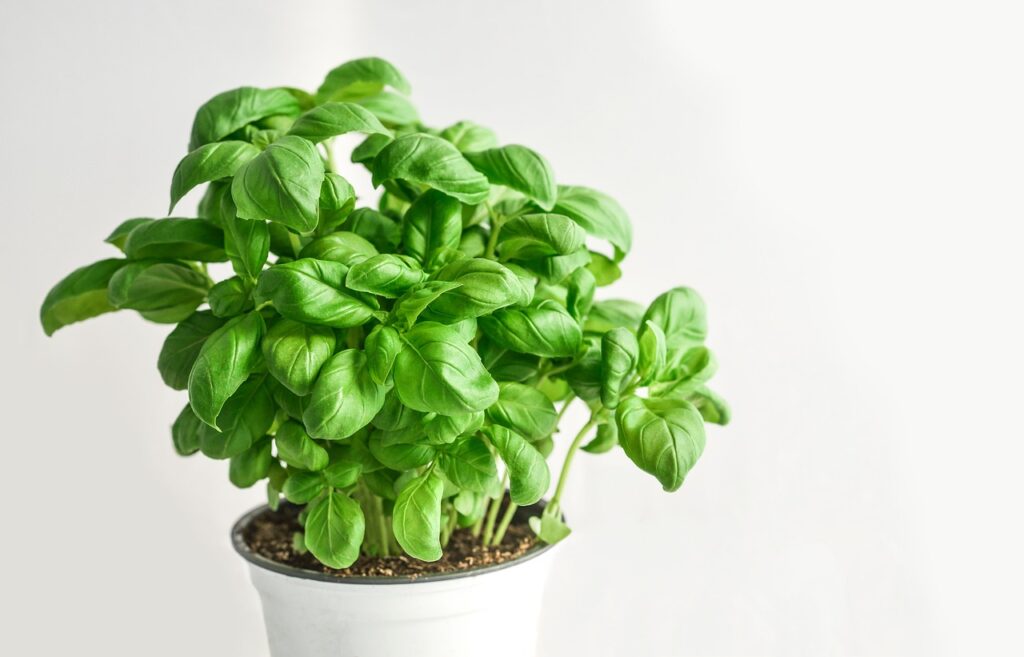
Survival Garden Seeds: Plant #1:
Our Favorite Basil Seed Collection
Parsley
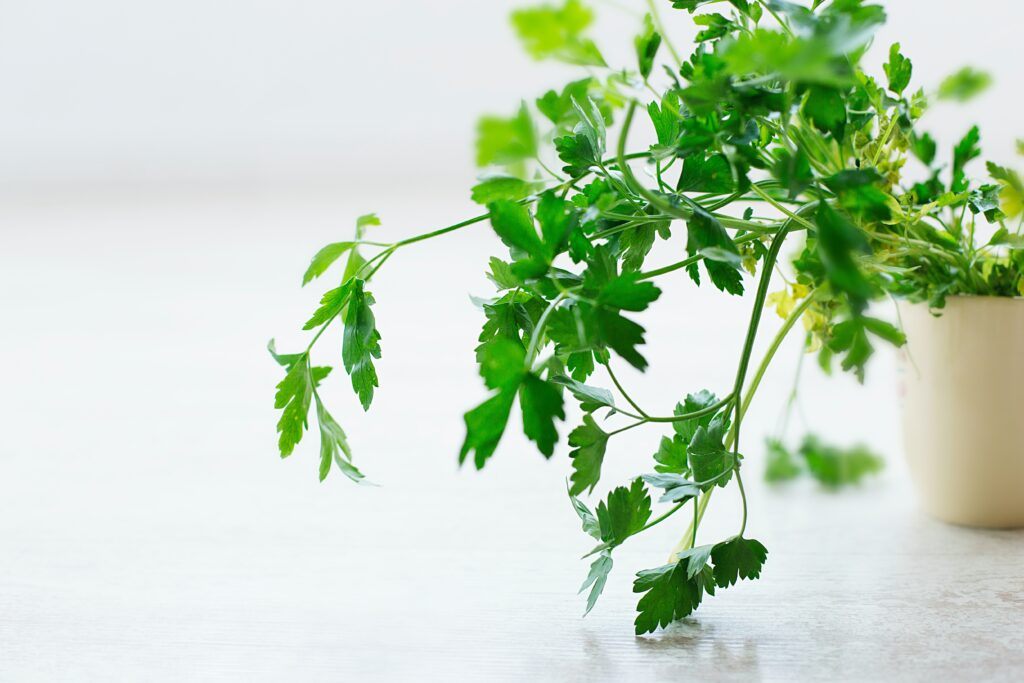
Survival Garden Seeds: Plant #2
Heirloom Parsley (Curled)
Cilantro (Coriander)
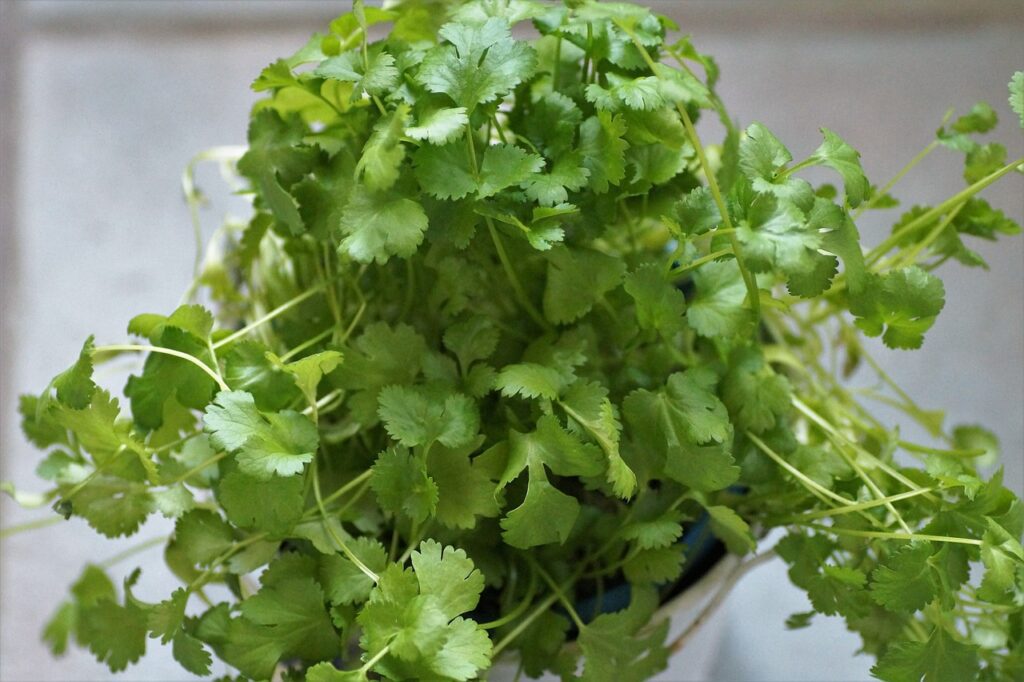
Survival Garden Seeds: Plant #3
Heirloom Open-Pollinated Slow-Bolt Cilantro
Get the most out of our new plants by eating their seeds too: add lightly fried parsley seeds to soups for a fragrant addition; cilantro seeds, otherwise known as coriander seeds, are great for frying into stews and hearty dishes commonly used in Indian and Mexican cuisine.
We’ll add many more to our collection throughout the year to build our suburban homestead, so be sure to join Poly’s Farm to follow along.
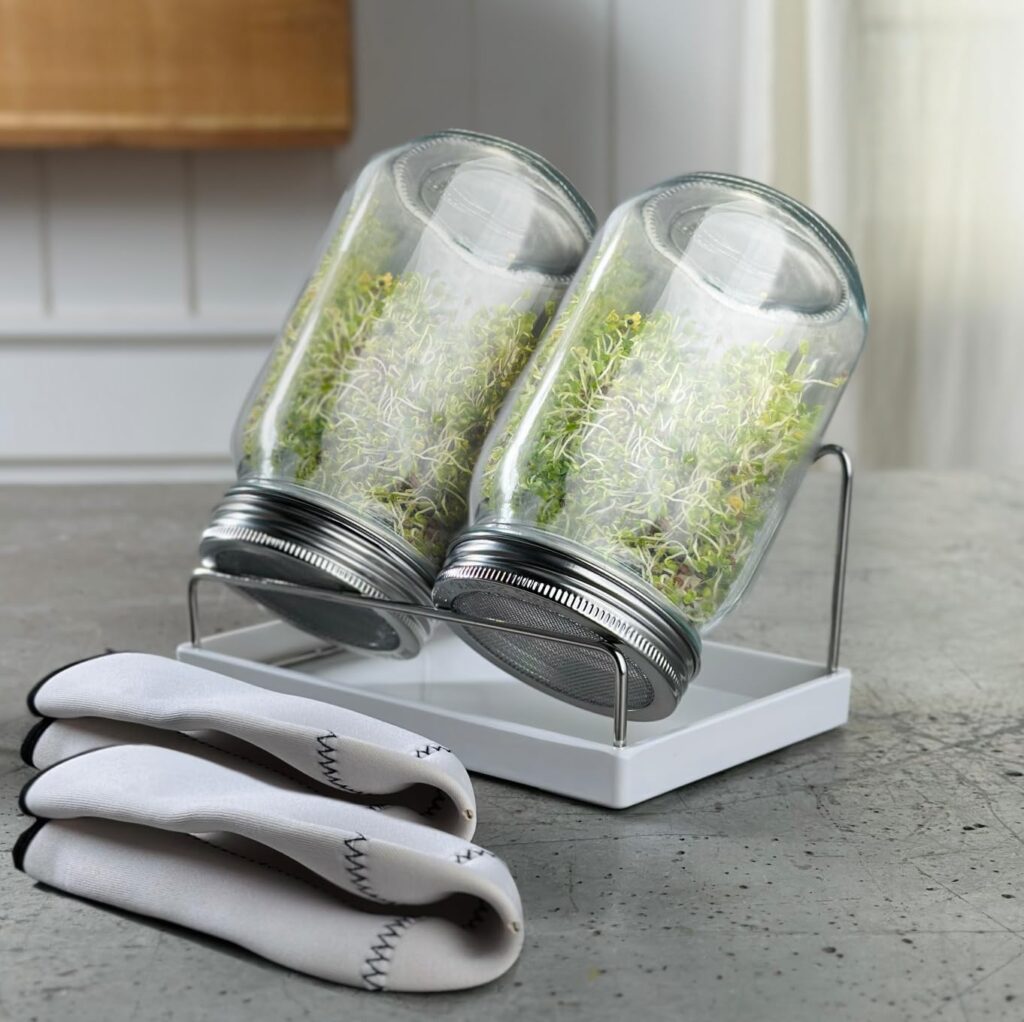
Plant Food Scraps and Sprout Seeds
Maximize your groceries by adopting a minimalist approach to regrowing food scraps and creating sprouts from extra seeds for an added crunch to your meals. Transform kitchen scraps like vegetable ends and herb stems into new plants, creating a sustainable cycle that minimizes waste and stretches your grocery budget.
A sustainable and efficient kitchen is the heart of any homestead. Regrowing food scraps and growing sprouts can be a basic and resourceful addition to a minimalist grocery list.
Pick the Perfect Location for an Indoor Garden
Identifying the ideal location for your indoor garden is key to its success. Most plants require ample sunlight, so choose a spot near a window that receives plenty of natural light. If your apartment lacks direct sunlight, consider investing in LED grow lights. These energy-efficient lights mimic natural sunlight and ensure your plants receive the light they need to thrive.
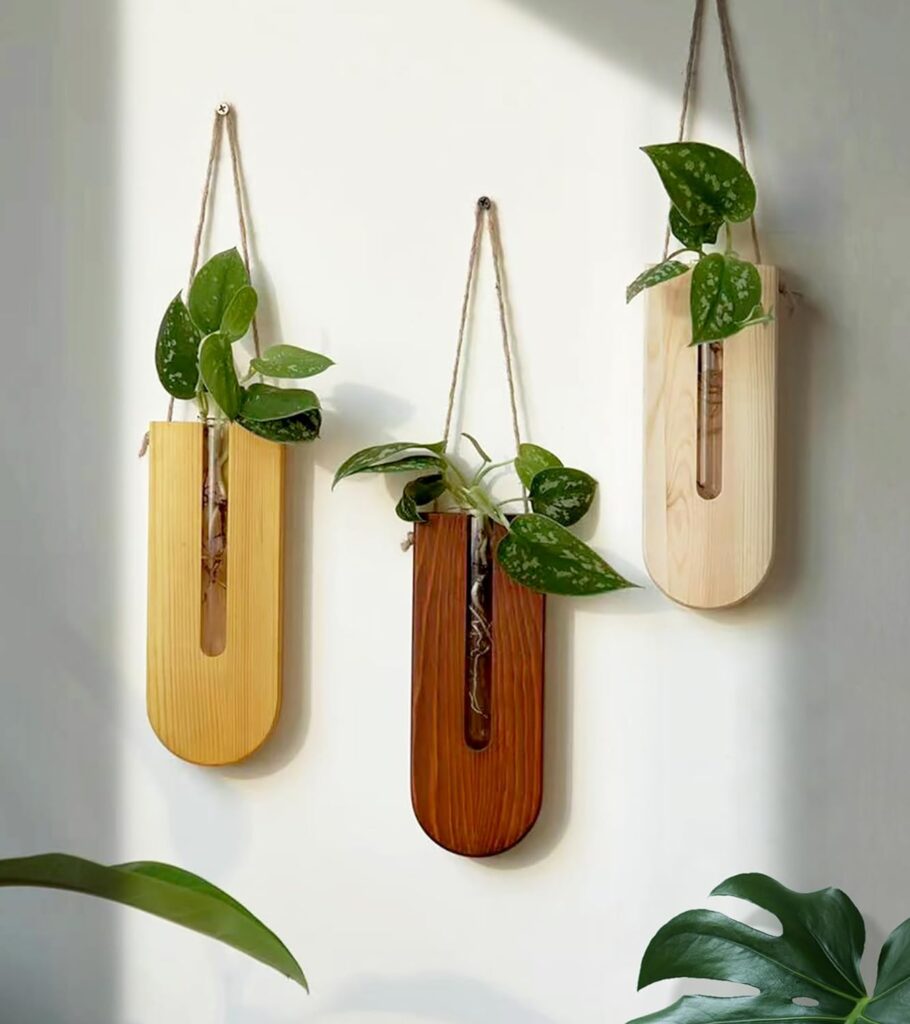
Space-Saving Containers for Indoor Gardening
Opt for space-saving containers like hanging planters, wall-mounted shelves, or tiered stands. Don’t forget a stylish propagation station.
Automated Watering for Apartment Homesteads
Invest in self-watering containers or a hydroponics indoor growing system. These containers have a reservoir that allows plants to absorb water as needed, reducing the risk of overwatering or underwatering.
Build a Homesteading Routine
Treat your homesteading daily chores as a therapeutic escape from the hustle and bustle of daily life; you don’t need acres of land to live with the spirit of a simple living. Despite a busy lifestyle, set aside specific times for your indoor garden every week to tend to plants, cook whole foods meals, preserve and craft food items, and keep a tidy home.
Follow along with our daily homestead checklist to stay on top of it all.
New Recipes for Our Suburban Homestead
Here are some new ideas to use with our minimalist grocery list when our basil, parsley, and cilantro are flourishing.
- Add a couple of basil leaves to fruit smoothies for a fragrant nutritional boost
- Top vegetable chili with finely chopped cilantro for a fresh springy flavor
- Stir in chopped parsley to a tomato or cream pasta dish
- Add fresh basil or crunchy sprouts to grilled cheese sandwiches prepared with homemade basic bread
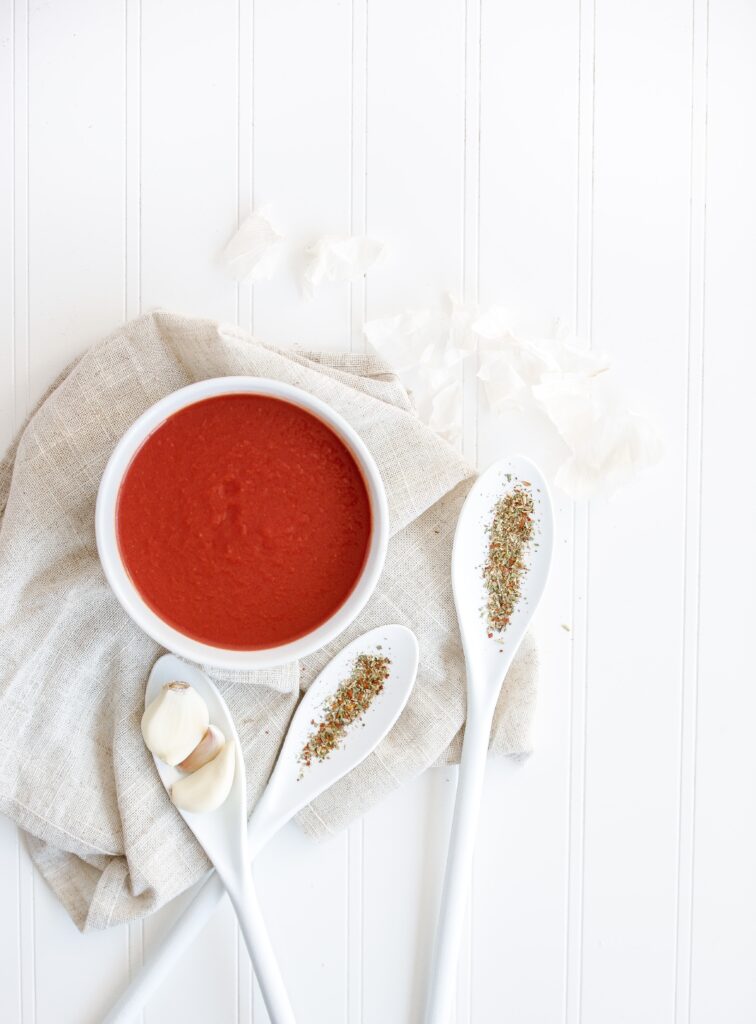
🌟 Unlocked Homestead Recipe: Salsa
Roast tomatoes for 10-15 minutes, until skin is charred. In a food processor, blend roasted tomatoes and the remaining ingredients.
- 4-5 medium-sized tomatoes, diced
- 1 small onion, finely chopped
- 2 cloves garlic, minced
- 1 jalapeño or serrano pepper, finely chopped (adjust to taste)
- 1/4 cup fresh cilantro, chopped
- Spicy pepper (jalapeños, habaneros)
- Juice of 1 lime
- Salt to taste
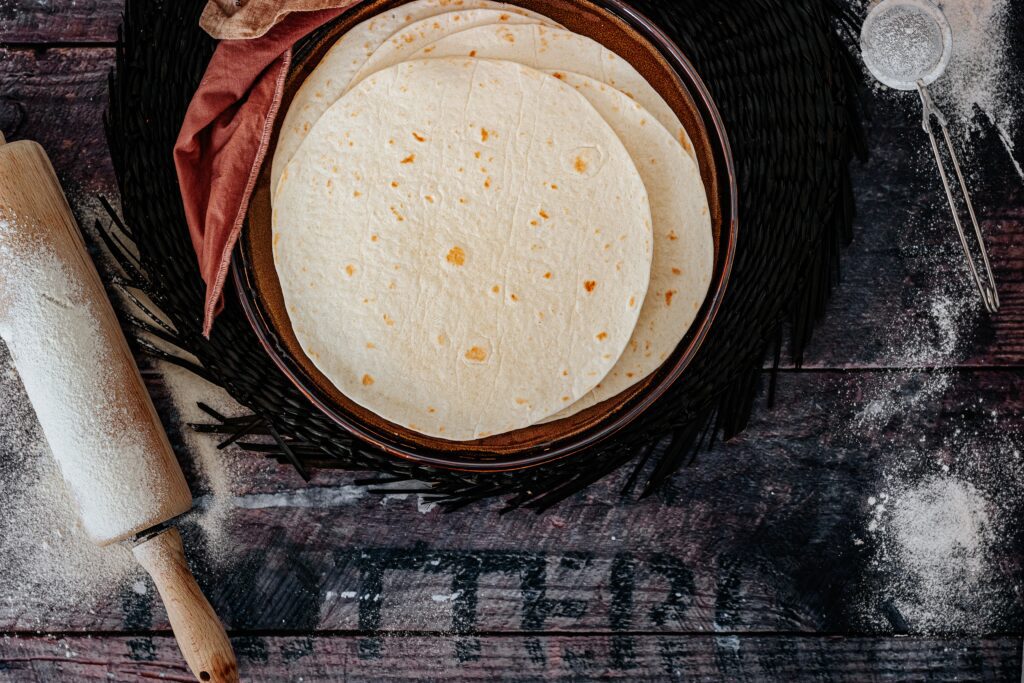
🌟 Unlocked Homestead Recipe: Tortillas
Combine ingredients and knead for 3-5 minutes or until it becomes smooth and elastic. If the dough is too sticky, add a little more flour. Divide the dough into golf ball-sized portions to get around 8-10 tortillas.
On a floured surface, roll each ball into a thin, round tortilla, aiming for about 8 inches in diameter. Heat a skillet or griddle over medium-high heat. Place a tortilla on the hot surface and cook for about 30 seconds to 1 minute on each side, or until it puffs up and gets light golden brown spots.
- 2 cups all-purpose flour
- 1/2 teaspoon salt
- 3/4 cup warm water
- 3 tablespoons olive oil
Conclusion: Enjoy the Harvest
Urban farming in an apartment is not only feasible but also a delightful way to reconnect with nature amid a hectic lifestyle. By choosing the right plants, optimizing your space, and utilizing modern technology, you can create a thriving indoor garden that enhances your living environment and brings the joy of gardening to even the busiest of individuals.
If you’re starting from scratch, begin your homesteading journey here.
